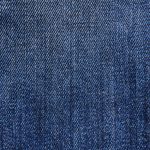If you're seeking to master the art of distinguishing between pinpoint and twill fabrics, it's essential to understand the intricate interplay of weaving patterns, thread count, texture, durability, appearance, common uses, and care instructions.
The alliteration of pinpoint and twill piques your curiosity, but delving deeper reveals their divergent characteristics. Pinpoint fabric showcases a symmetrical weave pattern, while twill fabric boasts a diagonal weave.
Additionally, pinpoint fabric has a higher thread count, resulting in a smoother texture, whereas twill fabric's lower thread count offers a more textured feel. These nuances greatly influence their durability, appearance, and suitability for different garments.
By grasping these distinctions, you'll confidently navigate the world of fabrics with finesse.
Key Takeaways
- Pinpoint fabric has a symmetrical weave pattern and a tight weave, resulting in a smooth, lustrous fabric.
- Twill fabric boasts a diagonal weave pattern and a distinctive diagonal ribbing.
- Fabrics with higher thread count are finer, softer, more durable, and more breathable.
- Pinpoint fabrics are commonly used in dress shirts and formalwear, while twill fabrics are versatile and suitable for a wide range of garments such as casual trousers, denim jeans, jackets, and workwear.
Weaving Patterns
If you're wondering about weaving patterns, pinpoint and twill fabrics differ in the way the threads are interlaced. Pinpoint fabrics are woven using a technique where one thread goes over two, under two in both the warp and weft, creating a very tight weave that results in a smooth, lustrous fabric. On the other hand, twill fabrics are characterized by their diagonal weave pattern, which is created by passing the weft thread over one or more warp threads and then shifting it to the next set of warp threads. This weaving technique gives twill fabrics their distinctive diagonal ribbing.
These different weaving techniques lead to distinct fabric characteristics. Pinpoint fabrics are known for their durability, crisp texture, and wrinkle resistance, making them ideal for formal dress shirts. On the other hand, twill fabrics are softer, drape well, and are less prone to showing wrinkles, making them suitable for a wider range of garments such as chinos, denim, and casual shirts.
Understanding these weaving patterns and their impact on fabric characteristics allows you to make informed decisions when selecting textiles for your projects.
Thread Count
When considering the distinction between pinpoint and twill fabrics, it's important to understand that thread count plays a significant role in determining the quality and characteristics of the fabric. Thread count refers to the number of threads woven into a square inch of fabric, encompassing both the lengthwise (warp) and widthwise (weft) threads.
Here's what you need to know about thread count and fabric quality:
- Determining Quality: A higher thread count often indicates a finer, softer, and more durable fabric. It results in a smoother surface, which feels luxurious and is more resistant to wear and tear.
- Breathability and Comfort: Fabrics with a higher thread count tend to be more breathable, making them ideal for warmer climates. The finer weave also provides a smoother, more comfortable feel against the skin.
- Visual Appearance: Higher thread count fabrics often have a more lustrous appearance and a softer drape, making them visually appealing and suitable for a wide range of garments and home textiles.
Understanding thread count empowers you to make informed decisions when selecting fabrics, ensuring that you choose the right material for your specific needs.
Texture
When it comes to the texture of pinpoint and twill fabrics, there are distinct differences that impact their appearance and feel.
Pinpoint fabrics are known for their smooth and flat texture, while twill fabrics feature a more textured, diagonal weave.
This difference in texture contributes to the overall look and durability of the fabrics, making it an important factor to consider when choosing between the two.
Pinpoint Smooth, Twill Textured
You'll notice that pinpoint fabric has a smooth texture, while twill fabric has a more pronounced textured surface. Pinpoint fabric is known for its smoothness and softness, providing a refined and elegant appearance. On the other hand, twill fabric is characterized by its rougher texture and thickness, adding depth and dimension to the material.
When comparing the two textures, consider the following:
- Pinpoint Smoothness: The smooth surface of pinpoint fabric lends it a luxurious and sleek look, ideal for formal attire.
- Twill Roughness: The pronounced textured surface of twill fabric gives it a more rugged and substantial feel, making it suitable for casual and workwear.
- Pinpoint Softness: The smoothness of pinpoint fabric enhances its comfort and draping, offering a delicate touch against the skin.
Understanding the contrasting textures of pinpoint and twill fabrics allows for informed choices in selecting the most suitable fabric for various purposes.
Pinpoint Flat, Twill Diagonal
The texture of pinpoint fabric is characterized by its flat surface, while twill fabric features a distinctive diagonal texture. Pinpoint fabric is known for its smooth, flat finish, creating a clean and polished look. On the other hand, twill fabric's diagonal weave creates a visually appealing texture with a noticeable diagonal pattern. Let's compare the fabric characteristics of pinpoint and twill in the table below:
| Characteristic | Pinpoint Fabric | Twill Fabric |
|---|---|---|
| Texture | Flat surface | Diagonal weave |
| Appearance | Smooth and polished | Textured and visually interesting |
| Versatility | Ideal for formal wear | Suitable for casual and formal attire |
Pinpoint Fine, Twill Durable
To truly understand the difference between pinpoint and twill fabrics, you need to feel the smoothness of pinpoint fine and the durability of twill firsthand.
Pinpoint fine fabric offers a luxurious, silky feel, perfect for formal shirts and business attire.
On the other hand, twill fabric, known for its diagonal weave pattern, provides exceptional durability, making it ideal for workwear, uniforms, and casual garments.
When comparing the durability of pinpoint fine and twill fabrics, it's evident that twill outperforms pinpoint fine in withstanding wear and tear, making it a preferred choice for heavy-duty applications.
To appreciate the contrasting textures of pinpoint fine and twill fabrics, run your fingers across the smoothness of pinpoint fine and the sturdiness of twill, and notice how each fabric serves distinct garment purposes.
- Run your fingers across both fabrics to feel the difference.
- Consider the garment applications for each fabric.
- Compare the durability of pinpoint fine and twill fabrics side by side.
Durability
When it comes to durability, pinpoint and twill fabrics have distinct differences that impact their strength and longevity.
Understanding these differences can help you make informed decisions about the type of fabric that best suits your needs.
Let's explore the specific points that set these fabrics apart in terms of their durability.
Pinpoint Vs. Twill Strength
Pinpoint fabrics generally exhibit greater durability and strength compared to twill fabrics, making them a popular choice for long-lasting garments. This is due to the higher thread count in pinpoint fabrics, which results in a tighter weave and increased resistance to wear and tear.
The higher thread count also enhances the fabric's ability to withstand abrasion and maintain its shape over time. Additionally, pinpoint fabrics are less prone to pilling, ensuring that the garment retains its smooth and pristine appearance even after repeated use.
These factors make pinpoint fabrics an excellent choice for clothing items that require longevity and resilience.
- Higher thread count in pinpoint fabrics results in a tighter weave
- Pinpoint fabrics are more resistant to abrasion
- Pinpoint fabrics are less prone to pilling
Longevity of Fabric
Achieving durability in fabric involves selecting the right weave and thread count to ensure longevity and resistance to wear and tear. When comparing the longevity of pinpoint and twill fabrics, it's important to consider the weave structures.
Pinpoint fabrics, with their closely woven fine yarns, tend to be highly durable and resistant to pilling, making them suitable for long-term use.
On the other hand, twill fabrics, known for their diagonal weave pattern, also offer excellent longevity due to their characteristic weave, which helps to minimize fabric wear and tear.
Both fabrics have their own strengths in terms of longevity, making them reliable options for different purposes. Ultimately, the choice between pinpoint and twill fabrics for longevity depends on the specific requirements of the intended use and the level of durability needed.
Appearance
Assessing the appearance of pinpoint and twill fabrics allows you to differentiate between the two and make informed fashion choices.
Pinpoint fabrics have a smooth texture and a fine weave, giving them a polished and elegant appearance. They're often associated with a crisp and clean look, making them suitable for formal occasions or professional settings.
On the other hand, twill fabrics exhibit a diagonal weave pattern, which adds depth and texture to their appearance. This gives twill fabrics a more casual and versatile look, making them ideal for everyday wear and a range of clothing styles.
Understanding the appearance of pinpoint and twill fabrics allows you to choose the right fabric for the desired look and occasion, ensuring that your fashion choices reflect your personal style and sophistication.
Common Uses
When choosing between pinpoint and twill fabrics, consider the common uses for each to ensure they meet your specific garment needs.
Pinpoint fabrics, known for their smooth texture and fine weave, are commonly used in dress shirts and formalwear due to their crisp, polished appearance. This fabric is ideal for professional settings and formal events, offering a sophisticated and elegant look.
On the other hand, twill fabrics, characterized by their diagonal weave pattern, are versatile and durable, making them suitable for a wide range of garments. Twill is commonly used in casual trousers, denim jeans, jackets, and workwear due to its strength and resilience. The diagonal weave also adds an element of visual interest to the fabric, making it a popular choice for a variety of casual and semi-formal attire.
Whether you're looking for a refined, formal look or a sturdy, casual garment, understanding the common uses of pinpoint and twill fabrics will ensure that you select the most suitable fabric for your specific garment needs.
Care Instructions
Do you know how to properly care for pinpoint and twill fabrics to maintain their quality and appearance?
Fabric maintenance and washing techniques are crucial for ensuring the longevity of these fabrics. Here are some essential care instructions to keep your pinpoint and twill fabrics looking their best:
- Gentle Washing: Always opt for a gentle wash cycle and use cold water to prevent any damage to the fabric. Hot water can cause shrinkage and fading, particularly in twill fabrics.
- Stain Removal: Promptly treat any stains on pinpoint and twill fabrics. Use a gentle stain remover and avoid harsh scrubbing, as it can damage the fabric. Always blot the stain instead of rubbing it.
- Fabric Care: When drying pinpoint and twill fabrics, it's best to air dry them to maintain their structure and color. If using a dryer, select a low heat setting to avoid any potential damage.
Following these fabric care instructions will help preserve the quality and appearance of pinpoint and twill fabrics, ensuring they remain in top condition for a long time.
Suitability for Different Garments
You should regularly consider the garment's purpose and your personal style when selecting between pinpoint and twill fabrics.
Pinpoint fabrics, with their smooth texture and fine weave, are well-suited for formal shirts, providing a crisp and polished look. However, they may lack the breathability and drapability needed for more casual or relaxed garments.
On the other hand, twill fabrics, with their diagonal weave pattern, offer excellent drape and a more casual appearance, making them ideal for sport coats, trousers, and casual shirts. They also tend to retain color well and resist wrinkles, adding to their versatility.
When choosing between these fabrics, it's important to assess the specific requirements of the garment. If breathability and drapability are crucial, twill fabrics may be the better choice, especially for garments that require movement and flexibility. Conversely, if a garment needs to maintain a crisp, formal appearance, pinpoint fabrics are the way to go.
Ultimately, understanding the characteristics of each fabric will enable you to make informed decisions based on the intended use and your personal style preferences.
Frequently Asked Questions
Can Pinpoint and Twill Fabrics Be Easily Dyed or Printed With Patterns?
When fabric dyeing or printing, pinpoint and twill fabrics offer different results. Pinpoint's tight weave yields excellent pattern clarity and colorfastness. Twill's distinctive diagonal weave provides durability and depth to printed or dyed designs.
Are Pinpoint and Twill Fabrics Prone to Wrinkling?
To maintain a crisp appearance, give attention to fabric care. Pinpoint fabrics offer wrinkle resistance due to their tight weave, while twill fabrics may show fewer wrinkles because of their textured appearance.
Do Pinpoint and Twill Fabrics Have Any Stretch or Give to Them?
Pinpoint fabrics offer minimal stretchability, providing a crisp, tailored look. Twill fabrics, on the other hand, have more give, enhancing comfort without sacrificing structure. Understanding these differences allows you to choose the ideal fabric for your needs.
How Do Pinpoint and Twill Fabrics Compare in Terms of Breathability and Moisture-Wicking Properties?
Pinpoint fabrics are highly breathable, allowing air to pass through easily. They excel in moisture-wicking, drawing sweat away from the body. Twill fabrics, while breathable, may not offer the same level of moisture-wicking properties as pinpoint fabrics.
Are Pinpoint and Twill Fabrics Suitable for Formal or Professional Attire?
Pinpoint and twill fabrics are both suitable for formal or professional attire. They offer excellent fabric durability and a wide range of color options, making them versatile choices for creating polished and stylish looks.
- How Does Ring Spun Cotton Affect Garment Fit and Shape Retention? - August 13, 2024
- What Are the Challenges in Producing Ring Spun Cotton? - August 13, 2024
- Is Ring Spun Cotton Suitable for Plus-Size Clothing? - August 13, 2024






